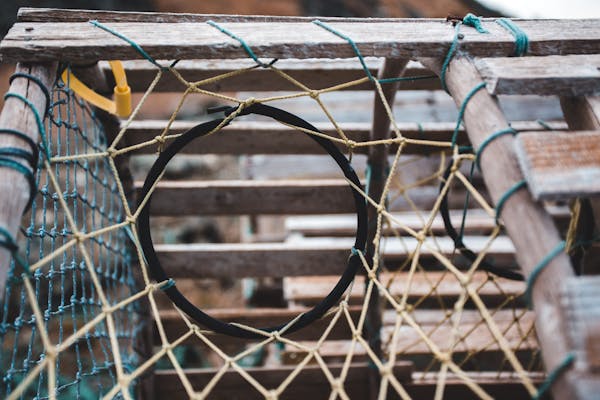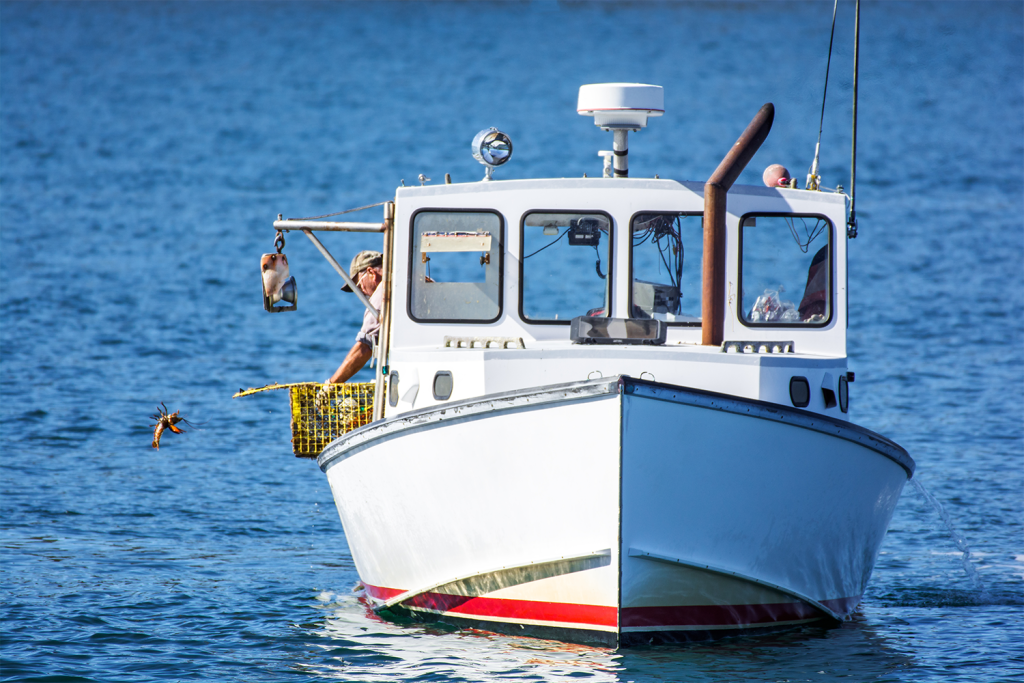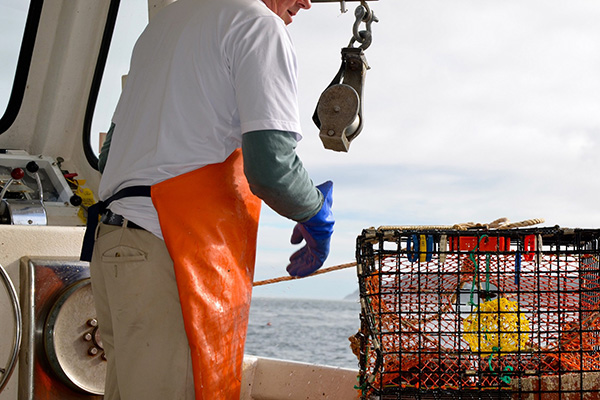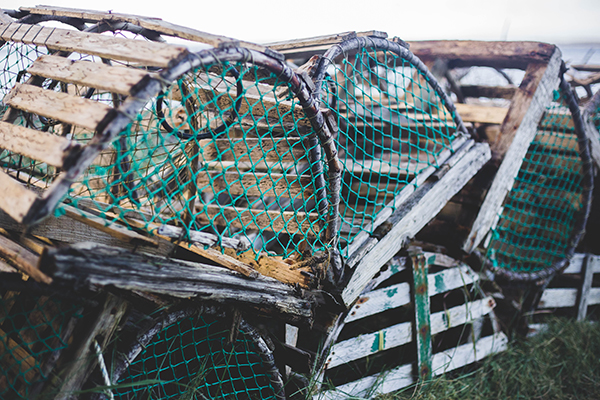Researchers develop indicators to measure socioeconomic resilience of Maine’s lobster fishery and its supporting communities

A University of Maine-led research team has developed new indicators to measure the socioeconomic resilience of Maine’s lobster fishery. The study aims to deepen understanding of the industry’s challenges and guide future policies supporting the fishery and the communities it sustains.
Maine’s lobster fishery, supporting thousands of jobs, is closely monitored and managed through biological surveys and industry reports. However, these statistics don’t capture the full impact of supply disruptions, market shifts and geopolitical tensions on the industry and its communities.
With commercial lobster landings dropping 27 percent between 2016 and 2022, the Maine Lobstermen’s Association began exploring new ways to measure the fishery’s socioeconomic resilience, helping leaders better respond to the industry’s challenges.
After two years of data collection, analysis and interviews with lobstermen and stakeholders, these holistic indicators offer a more complete view of the industry’s health, extending beyond fishermen to include their families, processors, restaurants and communities.
“For far too long, fishery managers have lacked the data needed to consider the social and economic impacts of regulations on Maine’s lobster industry,” said Patrice McCarron, executive director for the Maine Lobstermen’s Association. “This study provides a suite of indicators to fill that gap so that future regulations may address sustaining the resource, lobstermen and Maine’s coastal communities.”
Published in Marine Policy, the study identified eight key socioeconomic indicators to monitor the fishery’s resilience: coastal accessibility, operational condition, business investments, community composition, financial health, risk-taking, personal spending and physical and mental health. These indicators draw on data from state and federal agencies, as well as public sources.
For example, coastal accessibility draws on housing and rental data from sources like the Maine Housing Authority and Airbnb, while operational condition relies on landing, trip, crew and gear data from the Maine Department of Marine Resources.
The declines we are seeing in affordability of coastal housing can mean that lobstermen must travel further to the waterfront where they work, and may also be a barrier to people looking for seasonal work on lobster boats.
“These indicators define important socioeconomic components of the fishery that lobstermen have been describing for many years,” said Theresa Burnham, a research associate with the UMaine School of Marine Sciences. “Quantifying the indicators provides an opportunity for fishermen, local communities and managers to identify and quickly respond to changes in the socioeconomic condition of the fleet.”
One key finding is that waterfront housing in Maine has become increasingly unaffordable for median-income earners. Combined with a spike in short-term rentals, the data shows a steady decline in coastal accessibility across the state since 2016.
“The declines we are seeing in affordability of coastal housing can mean that lobstermen must travel further to the waterfront where they work, and may also be a barrier to people looking for seasonal work on lobster boats,” Burnham said.
The findings also revealed regional differences in Maine’s lobster industry. In eastern Maine, operational condition – a measure of costs and earnings – improved, while it declined in southern Maine and the mid-coast. Southern Maine communities were also the least dependent on the lobster industry for their socioeconomic well-being.
The development of these indicators lays the foundation for enhanced monitoring of the state’s lobster industry, but more data is needed to fully put it to use. Coastal accessibility and operational condition are well-supported by data, while personal spending and physical and mental health lack sufficient public data. Other indicators, such as business investments, community composition, financial health and risk-taking, are limited.
The researchers stress that increased data sharing with private businesses and government agencies could enhance these indicators and offer deeper insights into the industry’s health. Future studies could also extend their use, potentially creating a model for monitoring other fisheries like clam and cod.
“This research will provide valuable data to help researchers and regulators understand the connection between the biological status of the resource and the socioeconomic well-being of the industry and the communities it serves,” said Kathleen Reardon, study co-author and senior lobster biologist at the Maine Department of Marine Resources.
Now that you've reached the end of the article ...
… please consider supporting GSA’s mission to advance responsible seafood practices through education, advocacy and third-party assurances. The Advocate aims to document the evolution of responsible seafood practices and share the expansive knowledge of our vast network of contributors.
By becoming a Global Seafood Alliance member, you’re ensuring that all of the pre-competitive work we do through member benefits, resources and events can continue. Individual membership costs just $50 a year.
Not a GSA member? Join us.
Author
Tagged With
Related Posts

Fisheries
DFO and First Nations to pool data to inform commercial lobster fishing decisions in Gaspé
Collected data will be used to assess if stocks in Gaspé can support more commercial lobster fishing while ensuring conservation.

Fisheries
U.S. appeals court sides with Maine lobster harvesters in latest turn in the right whale saga
A U.S. court rules NOAA must vacate a biological opinion that found Maine's lobster fishery violated the Endangered Species Act.

Fisheries
MSC suspends certification for Maine lobster fishery, enraging state’s political leaders
Maine’s governor and Congressional delegation say activists with an "axe to grind" led to the Marine Stewardship Council's decision to suspend Maine lobster’s certification.

Responsibility
Maine lobster industry speaks out against Seafood Watch ‘red-listing’
Seafood Watch urged consumers to avoid products from the Canadian snow crab and U.S. lobster fisheries, due to right whale entanglement risks.



